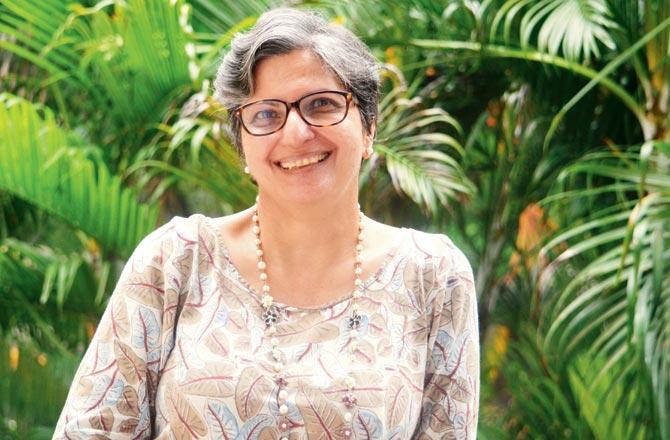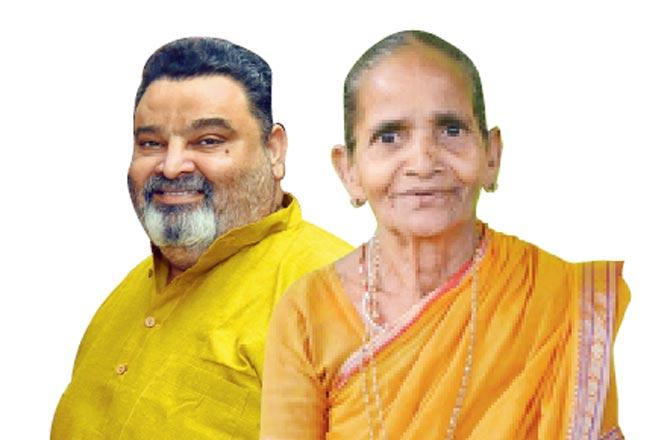How they reflected women-s history across centuries and why they need to be chronicled in changing times

Since 2016, Peoples Archive of Rural India (PARI) has been leading the Grindmill Songs Project (GSP), first started in 1995, gathering recordings, videos, transcripts and translations of songs sung by women in rural Maharashtra and Karnataka. Pic courtesy
When a girl was married off at the age of eight, and her in-law-s home became a ground of hostilities, where she couldn-t confide or complain, who would she turn to? The question is at the centre of a recent work by Heta Pandit, a researcher on Goan heritage. Pandit, who has been studying the origin of oviyos of ovis—folk songs sung by rural women in Goa—found the answer in a milling stone.
In the early part of the last century, child marriage was rife in Goa, says Pandit, and girls were not allowed to visit their maternal homes, until it was time for their first child to be born. Her first chore of the day was typically at the milling stone, where she-d grind grain, before the rest of the household woke up. The solitary pursuit was often bolstered by the slow, rhythmic sound of the two, circular flat stones grinding against each other. It inspired her to sing poignant oviyos, where she recalled memories of her maternal home, and sometimes even the mythological legends that she had heard, as a child. That-s how the milling stone became her confidante and sakhi.
ADVERTISEMENT

Heta Pandit has spent the last two years researching and translating oviyos in Goa. Her first collection of 26 songs, Grinding Stories: Songs from Goa, released in 2019. The next volume will be out later this year. Pic courtesy/Farhad Patel
Pandit has spent the last two years researching and translating oviyos. Her first collection of 26 songs, Grinding Stories: Songs from Goa, released in 2019. The next volume, which will be out later this year, will have 25 more. "This one will also have the original [songs] in Marathi-Konkani dialect from Sattari in the Devnagri script and new songs from the Christian Gavda community in the Gavda dialect with the translations in English," she says.
It was in early 2018 that Pandit was first introduced to the authors of these songs. The researcher was in the village of Zholambe on the border of Maharashtra and Goa to explore kaavi—the ancient art of etching on walls and infilling with a paste of red soil—at Shri Mauli Temple, when she came across one of the kaavi images of Garuda holding up a king cobra. "The cobra and the eagle are traditionally seen as enemies, but here Garuda had a benign expression, a picture of compassion. When I asked Dr Rajendra Kerkar, environmentalist and folklorist about it, he said, -In Goa, if someone is in trouble, even if it is your enemy, you rescue him.- That story made me curious. Dr Kerkar and wife Pournima have been documenting this form of oral history, and it-s they who introduced me to the storytellers," she shares.

Heta Pandit
The quest to delve deeper into the oral storytelling tradition, led her to the oviyos. "Going by the content, the descriptions of the plants, trees, lifestyle, culture, social and family structure, this is a Goa that we cannot recognise today," she says. The singing of oviyos and other indigenous songs were banned by the erstwhile Portuguese regime in 1684, says Pandit. The culture went underground after that and only resurfaced when Goa was liberated. "We might have lost a lot of the original material along the way," she feels.
This tradition of women singing by the grinding stone is not Goa-s alone. It was also common in parts of Karnataka, Maharashtra and Gujarat, says Dr Kurush Dalal, archaeologist and food anthropologist.

Food anthropologist and archaeologist Kurush Dalal says that while the "electrical grinders have liberated and emancipated women," they have unfortunately led to the death of this rich musical tradition; right Saraswati Dutta Sawant, a storyteller from Goa
In fact, in 1995, social scientists Hema Rairkar and Guy Poitevin, initiated the Grindmill Songs Project GSP, and travelled the length and breadth of rural Maharashtra and Karnataka, to record grinding-inspired songs, which were known as ovis in these regions. Bernard Bel, an ethnomusicologist who took over this project from the founders, handed over this collection of 1,10,000 songs to the People-s Archive of Rural India PARI in 2016. With PARI-s involvement, the project has been revived, and work is currently on to gather more recordings, videos, transcripts and translations. "These women sing about family relationships, Babasaheb Ambedkar-s teachings, farming, change of seasons, religion, pilgrimages to Pandharpur, and stories from the Ramayana, especially about what Sita endured," says Namita Waikar, who is leading the GSP project at PARI. "The most poignant ones are about women-s identity in a patriarchal society, about brother and sister born as equals, but treated differently. In the songs, they tenderly express their love for their brother and parents, but also express their right over family land, which they don-t get to own," she adds.
Where Maharashtra-s grinding songs have feminist stirrings, in Goa, because of the social customs that prevailed, the deliberate act of isolating younger women, produced songs of "lament, distress and longing for maternal love". "One of the storytellers [in her song] said that she had seen her brother for the first time when he was eight years old. Her mother had him after she had left for her in-law-s. In another song, a storyteller says that, -she stops to eat wild berries… for there is never enough food in the house-," says Pandit. Since most of the women in the menstruation age were also restricted from using musical instruments, they-d use kitchen utensils "to provide the percussion," says Pandit. The mussel mortar and pestle and the davli maan the back of the kneading trough were other common tools used to make music.

Storyteller Shobha Nawathe, who hails from rural Goa, sings oviyos at the grinding stone. Pic courtesy/Tushar Rao
That parts of rural Goa, Karnataka and Maharashtra continue to use the milling stone—although with electrification—means that the oviyos or ovis are still occasionally sung, while grinding. "The older generation prefers to mill nachni, rice, wheat, and other millets on the grinding stone. They say -the food tastes better-," says Pandit. But, otherwise, these songs, which are passed down from mother to daughter or grandmother to granddaughter, are mostly revisited only during the pre-wedding rituals—haldi and ros ceremonies—of the Hindus and the Christian Gavda community in Quepem, South Goa.
Dalal says that while the "electrical grinders have liberated and emancipated women," they have unfortunately led to the death of this rich musical tradition, "which is an important part of our subaltern literature".
But, the growing interest in oviyos across the western belt of India, has made its creators more aware of their extraordinary talent. Many of them are now passing these songs to their "students". "The storytellers that I met and documented, understand the value of the songs. Some are not literate and yet asked for a copy of the written documentation," says Pandit.
Waikar says that the challenge is to find these women. "We land up at a village and ask for them. If we can reach one of them, word is sent to the others. At first, the women say they can-t remember the songs—you see, these are not written down and many of them are not literate or have recently become literate through adult literacy classes. But, if they remember one song and start to sing, the other songs come pouring out from memory." Among those in the audience, are their children and grandchildren, who appear both surprised and moved by this powerful expression of a life once desired.
Song of hope and despair
Storyteller Sarojini Bhiva Gaonkar-s oviyo Kinchan bai zaalya or the Evening song, says Heta Pandit, is one of the most haunting renditions she has heard. "This is a song of both hope and despair. It tells us of a time when there were no clocks or mobile phones. You had to tell the time of the day by seeing the shadows on the walls. The song also speaks of waiting for a younger brother when the storyteller knows that no brother will ever come, especially in the evening," she says. "At the end, the storyteller says, -let the world be a brighter place- and in saying so, she expects the whole world to change just with the lighting of a small oil lamp. But she cannot lift up her head nor arrest the movement of her hands while grinding grain and has to ask someone else to -light the lamp-. This itself is poignant. She cannot, in effect, change anything on her own. Her life is in someone else-s hands."
Catch up on all the latest Mumbai news, crime news, current affairs, and a complete guide from food to things to do and events across Mumbai. Also download the new mid-day Android and iOS apps to get latest updates.
Mid-Day is now on Telegram. Click here to join our channel @middayinfomedialtd and stay updated with the latest news
 Subscribe today by clicking the link and stay updated with the latest news!" Click here!
Subscribe today by clicking the link and stay updated with the latest news!" Click here!







